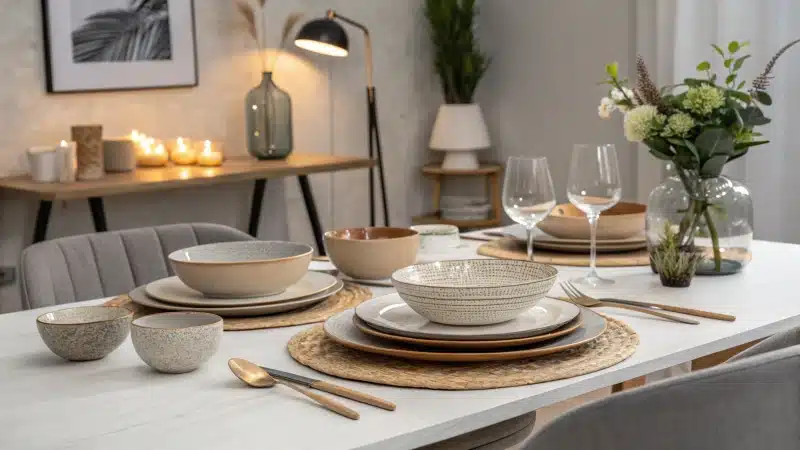
Ever noticed how the dishes we use daily are evolving alongside our lifestyles?
Consumer trends are shaping everyday tableware design through increased demand for sustainability, personalization, and minimalist aesthetics. Manufacturers are incorporating eco-friendly materials and offering customized options to meet evolving consumer preferences, leading to innovative and diverse tableware designs.
Growing up, I always admired the way my mom’s dinnerware collection seemed to reflect her personality—simple yet elegant, much like her. This nostalgic connection made me realize how personal tableware choices can be. Now, as an industry professional, I see firsthand how consumers are drawn to tableware that tells a story or echoes their values. From sustainable materials that reflect a commitment to the environment to minimalist designs that add calm to chaotic lives, every piece seems to carry a part of us. Dive into the specifics with me as we explore how these trends are reshaping what we bring to our tables.
Eco-friendly materials dominate tableware design trends.True
Sustainability is a key consumer trend, driving eco-friendly designs.
Personalization in tableware has decreased recently.False
There is an increased demand for personalized tableware options.
What Role Does Sustainability Play in Tableware Design?
Ever wondered how your dinner plates could make the world a better place?
Sustainability in tableware design emphasizes eco-friendly materials, minimizing waste, and promoting durability. It involves using recycled, biodegradable components and creating products that reduce environmental impact while enhancing consumer experience.
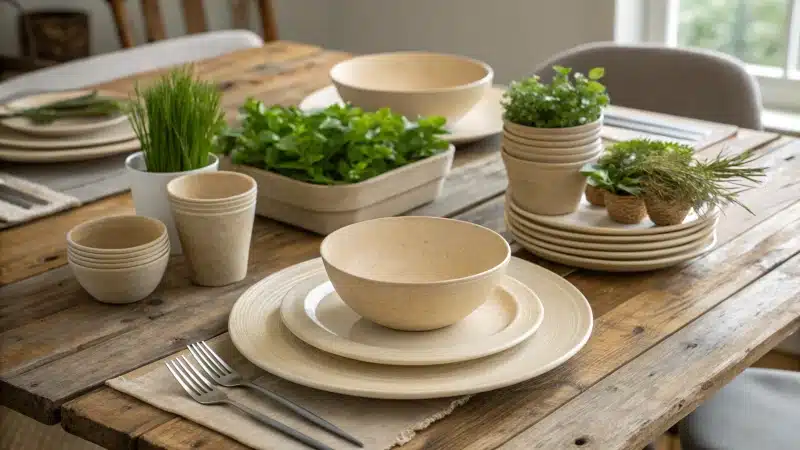
The Shift Towards Eco-Friendly Materials
I remember the first time I picked up a bamboo plate; it was so lightweight yet felt remarkably sturdy. It was a revelation. As I explored more about sustainable materials, I realized the vast potential these alternatives hold in reducing our ecological footprint. Nowadays, designers are embracing eco-friendly materials1 like recycled glass and bamboo, not only because they align with the minimalist aesthetic trend but because they genuinely reduce environmental impact.
| Material | Features | Benefits |
|---|---|---|
| Recycled Glass | Durable and vibrant | Reduces landfill waste |
| Bamboo | Renewable and lightweight | Biodegradable |
Waste Minimization and Circular Economy
The idea of a circular economy is something I often find myself explaining to friends over dinner. Imagine a world where nothing goes to waste—where your coffee cup can be recycled into a new product instead of ending up in a landfill. By adopting a circular economy approach2, designers are creating modular tableware sets that can be reconfigured or expanded, giving them a longer life.
Balancing Aesthetics with Environmental Impact
Striking a balance between style and sustainability is no easy task. I’ve faced this challenge in my work numerous times—ensuring that eco-friendly designs meet consumer demands for both aesthetics and functionality. It’s fascinating to see innovative designs3 that integrate cultural motifs or bespoke elements, helping us achieve this delicate balance.
Case Studies: Success Stories in Sustainable Design
I often look to real-world examples for inspiration. Several companies have successfully integrated sustainable practices into their tableware designs. Brands utilizing biodegradable plastics4 are seeing increased consumer interest and market share. These case studies not only highlight effective strategies but also offer valuable insights into the potential of sustainability.
Navigating these evolving demands is crucial for designers who want to stay ahead in the industry. By embracing sustainability, we’re not just creating products; we’re contributing to a healthier planet and tapping into a growing market demand for responsible consumption choices. It’s an exciting time for those of us passionate about redefining the dining experience for conscious consumers worldwide.
Bamboo tableware is non-biodegradable.False
Bamboo is a biodegradable material, making it eco-friendly.
Recycled glass reduces landfill waste.True
Using recycled glass in tableware helps reduce landfill waste.
How Is Personalization Influencing Tableware Trends?
Ever wondered why your dining table is starting to look like a personalized art gallery?
Personalization is reshaping tableware trends by driving demand for unique, customized items. This shift allows consumers to express individuality through bespoke designs, influencing aesthetics, materials, and production techniques.
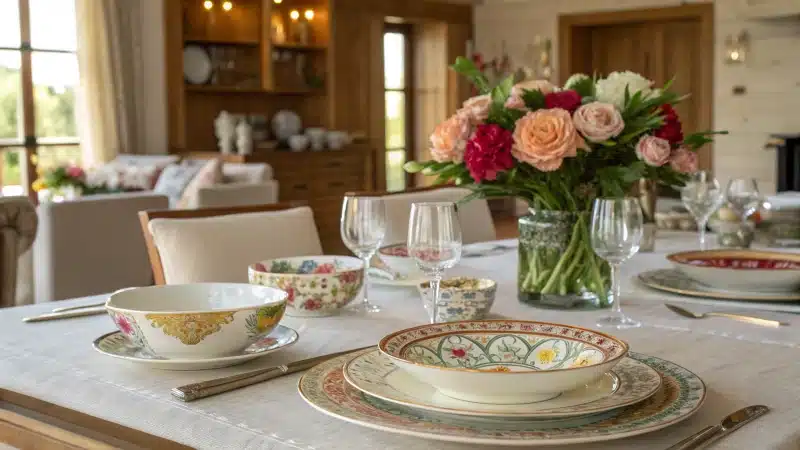
The Rise of Personalized Dining Experiences
As consumers increasingly value unique dining experiences, personalized tableware has emerged as a significant trend5. This shift is largely driven by the desire to create memorable and individualized settings, whether at home or in commercial spaces.
| Feature | Impact |
|---|---|
| Unique Designs | Reflect personal style |
| Custom Colors | Match specific themes |
| Engravings | Add sentimental value |
I remember the first time I crafted a custom ceramic mug. The delight in seeing my ideas come to life was unmatched. This same joy is driving the trend towards personalized tableware. Consumers, much like myself, are craving unique dining experiences that reflect their personal style—whether they’re hosting a cozy family dinner or a grand restaurant opening.
Technological Advancements in Customization
Thanks to technology, personalization has never been more accessible. I’ve seen firsthand how digital printing can create intricate designs on ceramics or how laser engraving can add those precise, personal touches without breaking the bank. It’s fascinating to watch as 3D printing opens up possibilities for shapes I once only dreamed of creating.
- Digital Printing: Enables intricate designs on ceramics.
- Laser Engraving: Provides precision in adding personalized details.
- 3D Printing: Opens possibilities for unique shapes.
These advancements have allowed me, and many in the industry, to meet individual requests more efficiently, offering a wider range of choices to our customers.
Aesthetic and Functional Considerations
When I design a new piece, I always strive for that perfect balance between beauty and practicality. Some of my clients prefer minimalist designs that still carry their personal touch, enhancing both usability and sophistication. Whether it’s a custom handle shape for easier grip or a decorative edge that tells a story, functionality paired with personalization is key.
- Minimalist designs with personalized elements can enhance usability while maintaining sophisticated6 looks.
- Custom shapes might cater to specific needs, such as ergonomic handling.
Sustainability and Personalization
These days, sustainability is more than just a buzzword—it’s a priority. In my own practice, I’ve seen a growing interest in eco-friendly tableware that doesn’t skimp on personal flair. Using recycled materials or biodegradable options not only appeals to eco-conscious consumers but also pushes us as manufacturers to innovate.
- Use of recycled materials combined with bespoke designs.
- Biodegradable options with customized patterns promote eco-consciousness7.
The challenge lies in harmonizing these elements: crafting tableware that’s as kind to the planet as it is personal to the user. As the demand for customized features grows, it’s clear that the future of tableware lies in balancing individual expression with practical, sustainable solutions. This is not just an opportunity for brands to shine; it’s a call to redefine how we think about every meal we share.
Personalized tableware reflects personal style.True
Consumers choose unique designs to express individuality.
3D printing increases tableware costs significantly.False
3D printing allows cost-effective production of unique shapes.
Why Are Minimalist Aesthetics So Popular in Tableware?
Ever wondered why our dining tables are increasingly graced by minimalist tableware? These simple yet elegant designs have taken over for good reasons, resonating deeply with modern living.
Minimalist aesthetics in tableware are popular due to their timeless appeal, functionality, and versatility. They reflect a broader lifestyle trend towards simplicity and mindfulness, offering both aesthetic and practical benefits in dining.
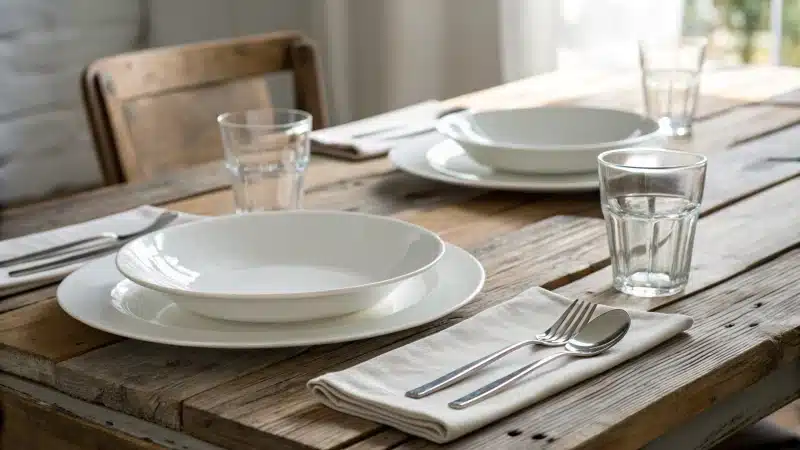
The Appeal of Simplicity
When I first stumbled upon minimalist tableware, it felt like a breath of fresh air. The designs were so straightforward yet so powerful in making the food the star of the show. It’s like wearing your favorite plain white t-shirt that goes with everything in your wardrobe. These pieces create a serene dining environment, letting you focus on the experience of enjoying a meal without distractions.
Functionality Meets Form
I’ve always been drawn to things that serve more than one purpose. Minimalist tableware is that perfect blend of form and function—imagine hosting a casual brunch with friends and then using the same dishes for a formal dinner with the family. This adaptability not only saves space but also makes life simpler and more organized.
Cultural Reflections
In today’s world, many of us are re-evaluating what we truly need, and this shift towards sustainability and mindfulness is beautifully mirrored in our tableware choices. I see millennials around me opting for designs that resonate with their values, making conscious decisions that align with a lifestyle focused on intention rather than excess.
Design Versatility
One of my favorite things about minimalist design is its versatility. Whether you’re pairing it with vibrant textiles or a simple bouquet of flowers, these pieces serve as a perfect backdrop for your creativity. A comparison8 of different settings shows how easily these can adapt to any theme or mood you want to create.
| Feature | Description |
|---|---|
| Timeless Design | Neutral palettes and simple shapes never go out of style. |
| Versatility | Suitable for both casual and formal settings. |
| Eco-Friendly | Often made with sustainable materials to reflect mindful living. |
Influence of Global Trends
I’ve always admired how different cultures interpret minimalism. The elegance of Japanese and Scandinavian designs has captivated many of us, bringing their appreciation for simplicity and function into our homes. It’s fascinating how these global influences blend with our local styles, creating something entirely new yet familiar.
Personal Expression
Despite its simplicity, minimalist tableware offers endless opportunities for personalization. I’ve seen friends add their own touch through monograms or unique glazing techniques, turning each piece into a personal story on the dining table. This customizability allows us to create settings that reflect who we are and what we cherish.
For more insights into how minimalist aesthetics continue to shape consumer choices, explore different design inspirations9 available on various platforms. Embrace the elegance of minimalism in your next tableware purchase!
Minimalist tableware enhances food presentation.True
The simplicity of minimalist designs emphasizes the food rather than the dishware.
All minimalist tableware is eco-friendly.False
While often made with sustainable materials, not all minimalist tableware is eco-friendly.
What Cultural Motifs Are Emerging in Modern Tableware?
Have you ever looked at your dinner table and wondered about the stories behind those plates and cups?
Cultural motifs in modern tableware include minimalist designs, bold colors inspired by global cultures, eco-friendly materials, and personalized elements. These trends reflect a blend of tradition and contemporary aesthetics, appealing to diverse consumer preferences.
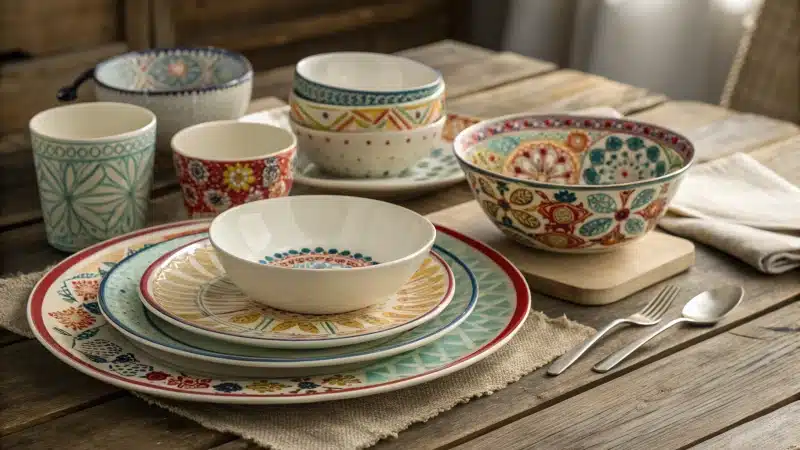
Minimalist Designs with a Modern Twist
I remember the first time I noticed the subtle elegance of minimalist designs in tableware. It was during a visit to a quaint little restaurant in Kyoto, where the simple yet profound beauty of their plates struck me. Minimalist designs often feature clean lines and simple shapes, but they do so much more—they tell stories of balance and harmony, especially when inspired by cultures like Japan. It’s amazing how such simplicity can evoke a sense of calm and completeness, highlighting balance and harmony10.
Vibrant Colors and Patterns
On the other end of the spectrum, I once hosted a dinner with friends who had traveled across Africa. They brought back colorful tales of markets brimming with vibrant textiles and intricate patterns. Inspired by their stories, I found myself drawn to tableware that echoed these rich colors and textures. The bold patterns, reminiscent of African or Indian motifs, not only added depth to our dining experience but also celebrated cultural diversity11. It’s as if each piece of tableware can transport us to a different part of the world.
Eco-Friendly Innovations
Sustainability is another narrative woven into modern tableware designs. As someone who’s been passionate about eco-friendly innovations, I’ve seen firsthand how recycled or biodegradable materials are transforming our dining tables. These materials often showcase natural textures and earthy tones, reminding us that beauty can be both sustainable and stylish while aligning with sustainable products12.
| Motif | Description |
|---|---|
| Minimalism | Simple lines and forms |
| Bold Patterns | Inspired by global cultures |
| Eco-friendly | Recycled and biodegradable options |
Personalization and Customization
In today’s world, personalization is key. I once gifted a friend a set of customized plates featuring her family’s crest—a gesture that was deeply appreciated. Personalized tableware allows us to infuse personal or cultural significance into everyday items, making each meal a unique experience. This trend is particularly popular in regions where home decor is an expression of personal identity. To explore more about this trend, see our section on custom tableware13.
Ultimately, the fusion of cultural elements in modern tableware isn’t just about aesthetics; it’s about storytelling and connection. Each piece links tradition with contemporary lifestyles, turning every meal into a journey through time and culture while connecting with contemporary lifestyles14.
Minimalist tableware designs incorporate Japanese motifs.True
Minimalism often uses Japanese motifs, focusing on simplicity and harmony.
Eco-friendly tableware rarely uses recycled materials.False
Eco-friendly tableware frequently uses recycled or biodegradable materials.
Conclusion
Consumer trends are reshaping everyday tableware design, emphasizing sustainability, personalization, and minimalist aesthetics while integrating eco-friendly materials and cultural motifs to enhance dining experiences.
-
Explore how eco-friendly materials like recycled glass and bamboo contribute to sustainable tableware design. ↩
-
Learn about circular economy approaches that reduce waste and extend product lifecycles in tableware design. ↩
-
Discover creative design solutions that balance aesthetics with environmental responsibility in tableware. ↩
-
Find out which brands are leading the way by incorporating biodegradable plastics into their products. ↩
-
Explore the latest trends in personalized tableware for insights on how customization is shaping consumer choices. ↩
-
Discover sophisticated minimalist tableware designs to find inspiration for combining simplicity with personal flair. ↩
-
Learn about eco-friendly personalized tableware options to understand how sustainability meets customization. ↩
-
Find creative ways to style minimalist tableware for various occasions. ↩
-
Gain inspiration from minimalist design trends to elevate your dining experience. ↩
-
Explore how Japanese tableware designs emphasize simplicity, offering insights into minimalist aesthetics. ↩
-
Discover how diverse cultural influences shape modern tableware trends with bold patterns and colors. ↩
-
Learn about the impact of eco-friendly materials on the evolution of modern tableware. ↩
-
Find out how personalization in tableware allows individuals to express their unique styles. ↩
-
Understand how modern lifestyles drive changes in tableware aesthetics and functionality. ↩
